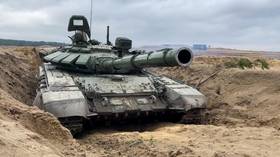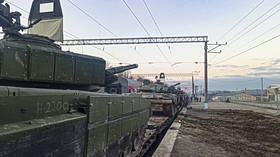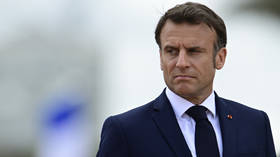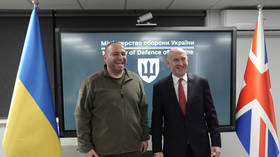Spies announce new Russian invasion timeframe

Russia’s fearsome forces will be ready to launch an invasion of Ukraine in the second half of February, Estonia has claimed, pushing back estimates from Western officials and media outlets that an incursion could be expected earlier this week.
In a statement on Tuesday, the NATO member state’s foreign intelligence service weighed in on when they believe Moscow could potentially order an offensive.
“In our assessment, the Russian Armed Forces are ready to embark on a full-scale military operation against Ukraine from the second half of February,” the notice read. “Once military readiness has been achieved, only a political decision is required to launch the operation.”
According to the department, from Autumn into early 2022, Moscow has “mobilized 150,000 men on the Ukrainian border, deploying units and capabilities from all its military districts, including the Far East, and all 12 armies. This is the single largest military buildup by Russia in the past 30 years.”
Tallinn’s assessment comes after Western officials and media outlets reported that Moscow could give the go-ahead for an offensive on February 15 or 16. British tabloid The Sun wrote on Tuesday that a “massive missile blitz and 200,000 troops” would await Ukraine in the early hours of Wednesday morning, according to US intelligence. However, once this window had passed, the outlet rephrased their article to claim that the attack could come “at any time.”
Moscow’s Ministry of Defense on Tuesday announced that its soldiers had completed their training exercises in Belarus, close to Ukraine, and had already begun preparing for their withdrawal. However, a number of figures in the West remained unconvinced by the troop pullout, with British Prime Minister Boris Johnson stating that “intelligence” sources hint that an invasion could still be on the cards.
The Kremlin has repeatedly denied that it has any plans to invade its neighbor and has sought to obtain security guarantees which would rule out NATO expansion and place restrictions on missile placement. Moscow also insists that the bloc should refrain from military activity on the territory of the former Warsaw Pact states that joined after 1997. Estonia joined NATO’s ranks in 2004.
Russian President Vladimir Putin has previously said that the military faction had deceived Moscow with false pretenses that it would not move into the space left after the fall of the Soviet Union. “Not an inch to the east, they told us in the 1990s, and look what happened – they cheated us, vehemently and blatantly,” he remarked.














